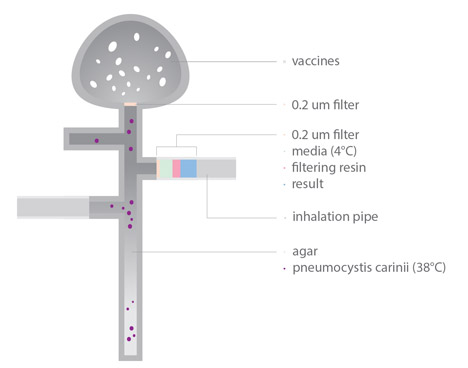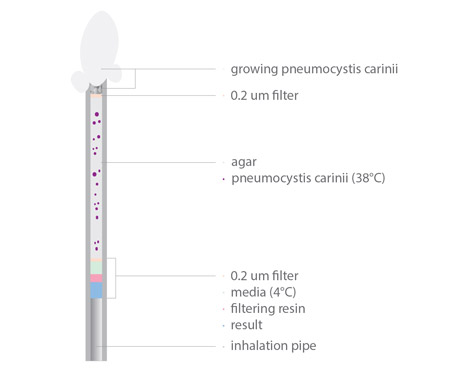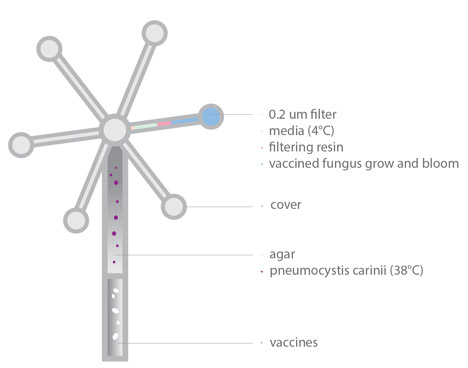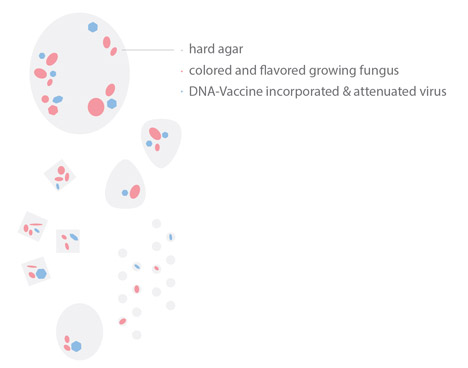Mushroom inhalers replace vaccination needles in RCA student proposal
For those scared of injections, Royal College of Art student Celine Park has proposed a new immunisation technique: inhaling vaccines through fungus (+ slideshow).
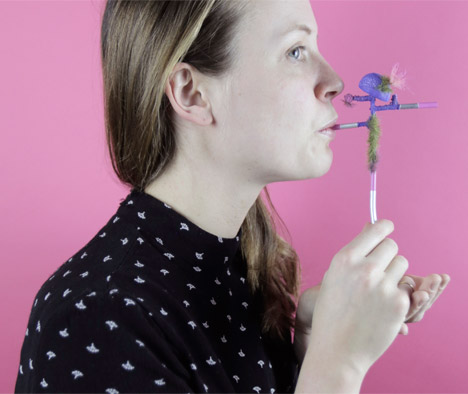
Park's conceptual Fungus Inhale Vaccination project imagines impregnating the fungi with weakened viruses, allowing its spores to carry vaccines into the bloodstream through the lungs using an inhaler.
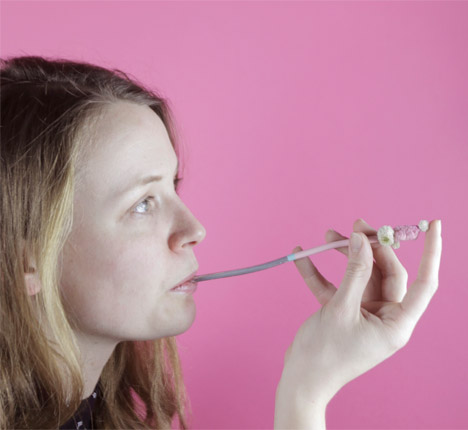
There are more than seven types of vaccine commonly used to protect against microbial threats like viruses. Park's proposal specifically targets attenuated vaccines, which use live microbes that have been weakened in a lab, so that they are no longer dangerous but still trigger the body to generate antibodies to fight against future infection.

Attenuated vaccines are currently used to treat and prevent viruses such as rabies, measles and polio.
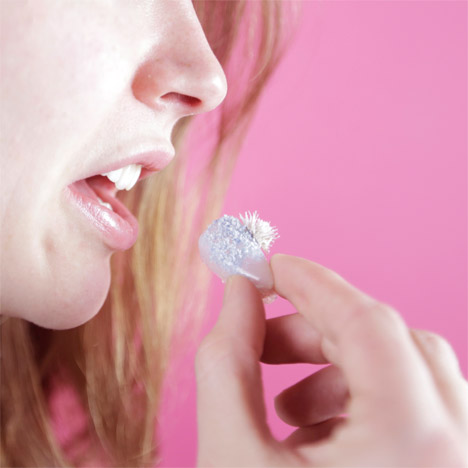
"Vaccinations can be inhaled when attenuated in fungus," Park told Dezeen. "Fungus already contains tons of viruses, thus virus is already attenuated in fungus. When we attenuate vaccines in fungus, it would maintain more viruses in the same amount of fungus."
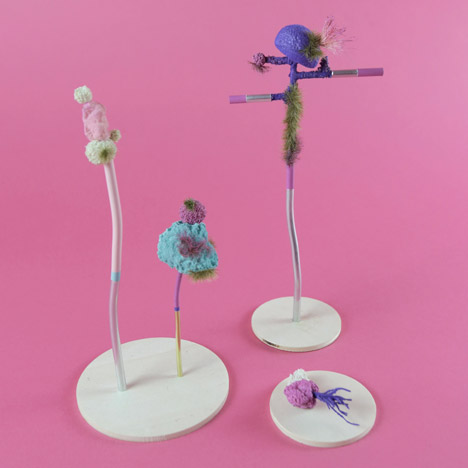
The weakened virus would be attached to the fungal spores – the microscopic particles that allow the fungi to reproduce when they detach from the parent organism.
To demonstrate her ideas, the designer created a series of fantastical coloured inhalers. The fungi are attached to the ends of pipes, which contain filters to catch unwanted particles as well as providing mouthpieces.
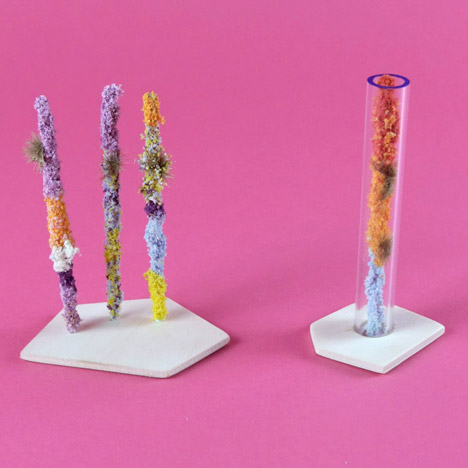
When inhaled, the spores would carry the vaccine into the respiratory system. It would pass through the lungs and into the bloodstream, where it can be transported around the body.
"Mould spores are very easy to transport to our lungs," said Park, who claims that inhalation of vaccines is more effective than injecting them into the blood through the skin.
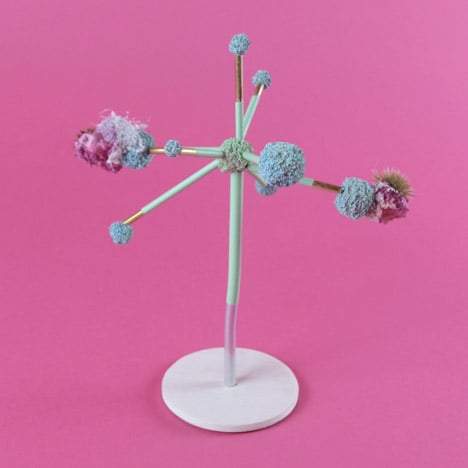
"Beside the fact that we can gain better immunity system with inhaled vaccinations, another benefit of having it is that it can easily transmit to surrounding people so they can easily get herd immunity as well – just like flu or pneumonia," she said.
Plastic inhalers are already commonly used to treat symptoms of asthma. Research into inhaling a flu vaccination was published in a medical journal in 2012, while Park said that scientists are also looking into administering insulin to diabetics in the same way.

"Many scientists are trying to create a way to inhale insulin instead of hypodermically injecting," said Park.
However, inhaling mould spores is inevitably not without risks or issues. Fungal diseases such as cryptococcosis, coccidioidomycosis, histoplasmosis and pneumocystis pneumonia could all prove fatal if inhaled by someone with a weakened immune system, such as patients with HIV or AIDS.

But most types of fungus could be used to administer vaccines safely, according to Park.
"Most of the fungus will be great," she said. "Although Candida Albicans – one of many kinds of fungus – will cause problem if it is inhaled by people who have AIDS. Although, it is okay for regular immunocompetent people."
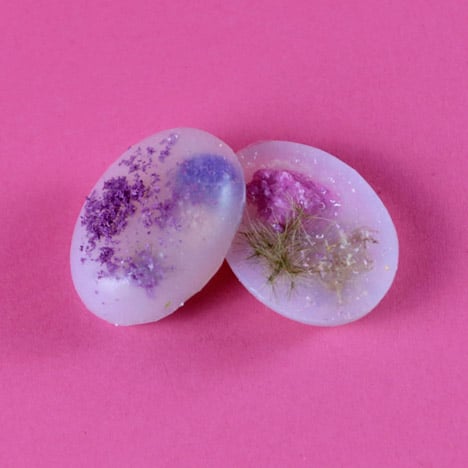
"Fungus has so many possibilities to be developed by the medical community. It can be used as the carrier of vaccine and for the delivery of RNA (ribonucleic acid) interference or DNA drugs."
"Also, fermentation by using fungus is already being researched and proved as dietary supplement formulation," she added.
As part of her proposal, Park also imagined chewable fungal vaccines that would be scented and flavoured to encourage children to eat them.
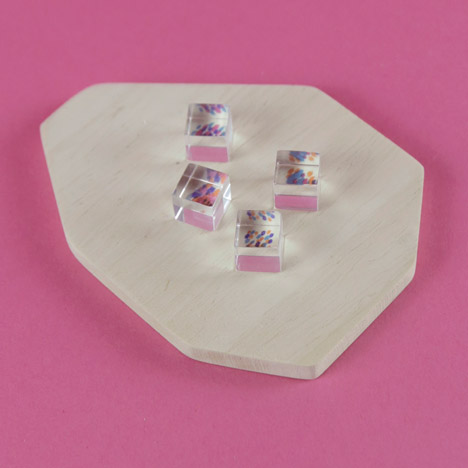
"The flavour of the drugs for children on today's market are very artificial," she said. "Ibuprofen syrup is being described as orange flavour but it tastes more like Fanta than orange juice. Therefore, pharmaceutical businesses need to develop the idea of how to maintain natural flavour in drugs."
"The majority of people have negative associations with fungus, as its negative side is much more exposed than the positive side."
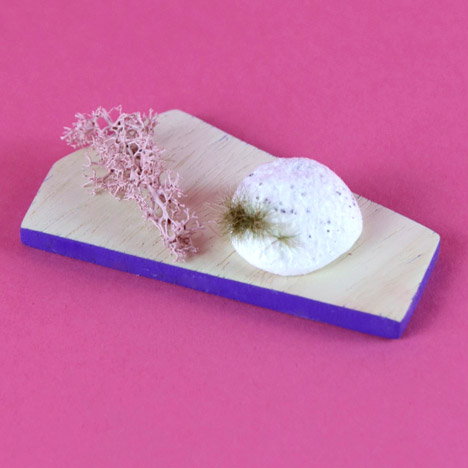
Park worked on the project while studying on the RCA's Design Interactions course, and showed the proposal at the Work in Progress exhibition earlier in the year. Synthetic biology projects presented the institution's Show RCA graduate exhibition earlier this summer, where her coursemate Paul Gong showcased his proposal to install tiny turbines in the arteries of genetically modified cows.
Designers have been experimenting with fungus as a sustainable material for a wide variety of applications. Some have suggested growing and moulding it into shape to form biodegradable architectural structures, furniture, packaging and even drones. Another proposal uses it to digest plastic while creating edible snacks.
